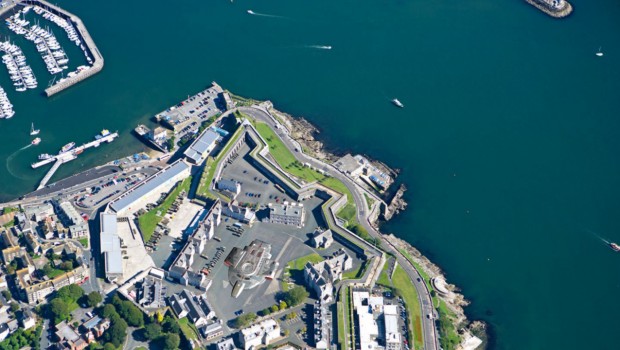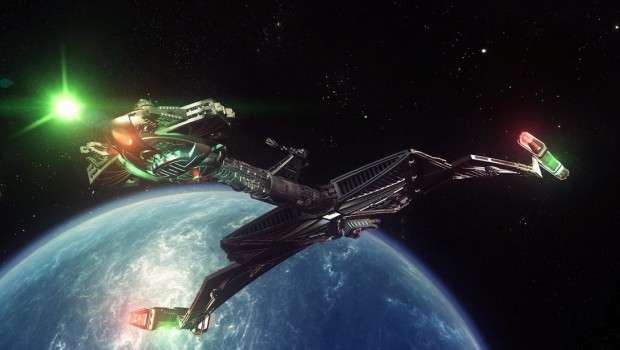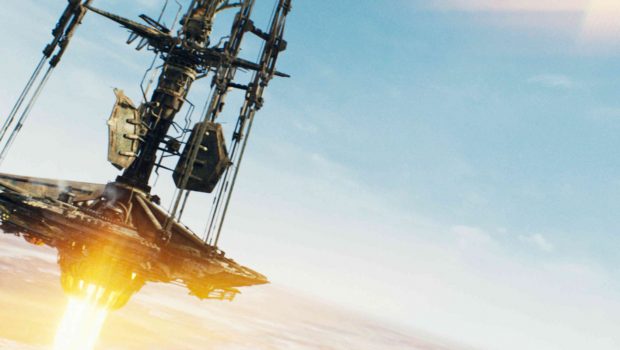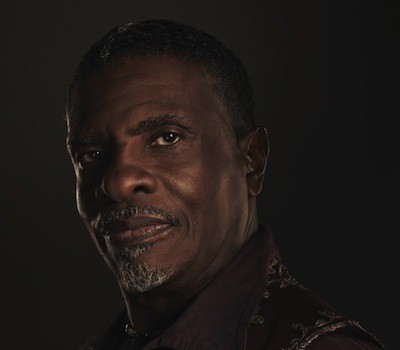
Joint Starfleet-Intaran base begins operations
Richard Janon reports from Forward Operating Base Gwalior on Intar near the Tzenkethi border, which opened to fanfare, musical performances, and a surprise starship landing.
When the Federation was first contacted by the Intaran Executive Council, little did they know it would take three Starfleet captains to negotiate for a joint Federation/Intaran base. Despite their request for a meeting with a Starfleet representative, the Executive Council turned away Captain Jonas Hancock of the USS Indominable, requesting that Starfleet send a representative “of great stature”.
In response, the Federation flagship was pulled from its patrol duties and sent to Intar in the hopes that its captain, a noted diplomat, would be able to negotiate. While met with courtesy and goodwill by the Executive Council, as well as the populace in general, he was also turned away at the first meeting. Subsequent meetings were held, several with members of the ship’s crew whom the captain hoped would be acceptable to the Intarans. Finally, a civilian contractor, a Bolian, was included in the negotiation party, where the Starfleet delegation learned they were all too thin, which made many Intarans uncomfortable.
Not Your Standard Captain
In response to this declaration by the Intarans, Admiral Thomas Mecum, commander of Starbase 128, directed USS Marshal Martz, to travel to Intar.
“Certainly, I was surprised,” Captain John H. Harris, commanding Marshal Martz, related to FNS. “It’s not often one gets called in to try to do something that the Federation flagship couldn’t. Of course, once I was briefed about the full details, I knew it was my… condition that made me suitable.”
Harris suffers from adipose hyper-replenishment syndrome, a genetic abnormality which creates obesity in otherwise healthy individuals. Its more popular name is Cyrano Jones’ disease, named for the first confirmed case.
“Every planet has periods where obesity is seen as a mark of wealth and power,” explained Professor Ograx of the Faculty of Social Sciences at the University of Betazed. “For example, the term ‘Rubenesque’ entered the human lexicon because of such a period in Europe. Even today, some Polynesian cultures on Earth tend toward heavier physiques.”
With Harris’ arrival, members of the Intaran Executive Council began talks in earnest.
“My Whole Body Was On Fire!”
The mystery of why the Tzenkethi were raiding Intar’s agricultural areas was soon solved, essentially by accident, when a simple lunch in a small city turned into a potentially lethal situation.
“My whole body was on fire!” Sergeant Major Leah Corwin, of the Marines’ 716th Special Operations Unit (embarked aboard Marshal Martz), told FNS. “I’d only taken one spoonful of the first soup in the sampler the owner had brought out when my throat just started burning. I couldn’t talk. I could hardly breathe, and it felt like I’d drunk a glass of acid. A minute later, the burning had spread to the rest of my body.”
Fortunately, Dr. Chase Woods, chief medical officer of the Marshal Martz, was quickly able to neutralize the reaction and begin regenerative therapy.
Tasked with finding the reason for Sergeant Major Corwin’s reaction to Intaran food, Lieutenant Morwenna Djalili, a biochemist aboard Marshal Martz, discovered that a compound in Intaran plants produces a wide variety of effects which vary by species.
“Everybody produces enzymes,” Djalili explained. “They’re essential to organic life. What happens with Intaran plants is that they mimic enzymes, triggering the production of chemicals within the body itself. The chemical compound produced varies by species. For example, Horrusi produce a compound with a caffeine-like stimulant property, while Halii produce a compound that mimics alcohol intoxication, and, of course, the symbiotic virus carried by New Hokkaidan humans produces an acidic compound.”
“I ran the simulations for all species who could be expected to visit, and the most interesting reaction occurred when it was run for Tzenkethi. That simulation produced a compound very similar to that used by Colonel Green’s troops during Earth’s Third World War.”
A Message to the Tzenkethi
In response to this revelation, negotiations went into warp drive. The Intaran Grand Assembly quickly passed a resolution authorizing Starfleet to begin construction of a forward operating base with the provision that it be jointly manned by both Starfleet and Intaran armed forces, and that the facility be under the command of an Intaran officer. In response, Starfleet dispatched the construction vessel USS Blount Island, as well as the starships Kumari, Hammersley, and Espero as additional protection for the planet.
These starships did not have long to wait before encountering an approaching group of Tzenkethi raiding vessels, accompanied by several larger ships. While the ensuing battle was small by wartime standards, nearly all of the Tzenkethi vessels were either severely damaged or destroyed, with Federation forces suffering varying damage. Only USS Espero suffered damage serious enough to require repair at a spacedock facility.
However, it was the Intaran leadership that ended the battle by broadcasting the firebombing of their own Tanzila fields, destroying the crop most often raided by the Tzenkethi. As the images of burning crops appeared on screens throughout the Intar system, Prime Councilor Aram Kodo issued Intar’s own ultimatum to the Tzenkethi:
“Take this warning back to your government. We will go to any length, even invite global starvation, to deny you your drug. Leave now, and never return. If you remain, you will be destroyed.”
Upon hearing this ultimatum, the remaining Tzenkethi forces withdrew.
“Together, We Will Defend This World”
Utilizing as many of the existing base facilities as possible, a team from the Starfleet Corps of Engineers, under the command of Commander Maahes “Bob” M’Rowri, broke all established records for reaching operational status when General An Rentoshi, the first commander of what was now being called FOB Gwalior, gave the order to begin operations on stardate 55854.2.
That evening, the base dedication ceremony was held on the base parade field. Celebrations began with a rendition of a Terran folksong by Captain Harris and several members of both the Starfleet and Intaran cadres who had transferred to the base. Acting as master of ceremonies, Harris conducted the ceremony, which included a message from the Federation President and an order from Prime Councilor Kodo for both the Intaran and Federation flags to be hoisted.
But it was the end of the ceremony which proved most memorable with a demonstration of the landing capabilities of Starfleet’s small starships.
“A Federation starship is born in space,” Harris informed the assembled audience, officers and Intaran leaders. “Most live their entire lives there, as they are too large to land and return. In recent years, however, a number of starship classes have been built with the ability to land on a planet’s surface.”
At that moment, spotlights around the perimeter of the parade ground pivoted up to reveal the Defiant class starship.
“Please welcome, under the command of Lieutenant Commander Michael McCune, the Federation starship USS Hammersley!”
And as the starship gently lowered itself to a landing at the very center of the parade ground, an entire planet cheered for her.
This is a reader-submitted article. Read more at Star Trek: Citadel. A fan-fiction project by John H. Harris, Star Trek: Citadel explores contemporary themes through the idea of a world where nearly everyone is what we would consider overweight.


 Previous Article
Previous Article Next Article
Next Article Mercy mission turns deadly after natives attack Klingon warship
Mercy mission turns deadly after natives attack Klingon warship  Narala of Nimbus III joins race for the presidency
Narala of Nimbus III joins race for the presidency  Planetary Defense Laser Misfires Causing Casualties
Planetary Defense Laser Misfires Causing Casualties  Outbreak of Kamaraazite Flu on Castal I, Sparking Anti-Talarian Sentiment
Outbreak of Kamaraazite Flu on Castal I, Sparking Anti-Talarian Sentiment  Presidential ribbon cutting or something more?
Presidential ribbon cutting or something more?  Candidates prepare for final debate
Candidates prepare for final debate  Candidate Narala faces questions about crime lord’s sudden acquittal
Candidate Narala faces questions about crime lord’s sudden acquittal  Presidential prospectives court public opinion
Presidential prospectives court public opinion